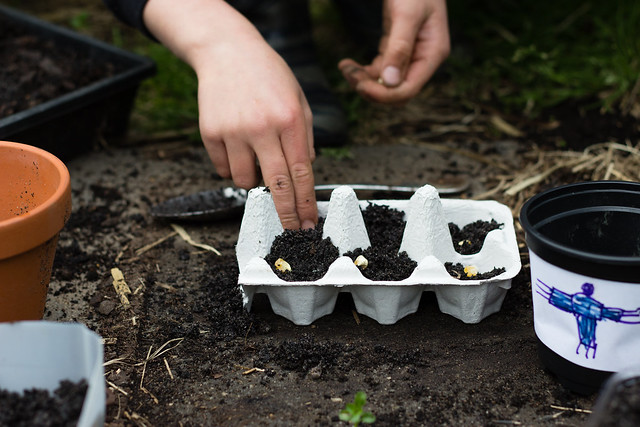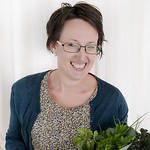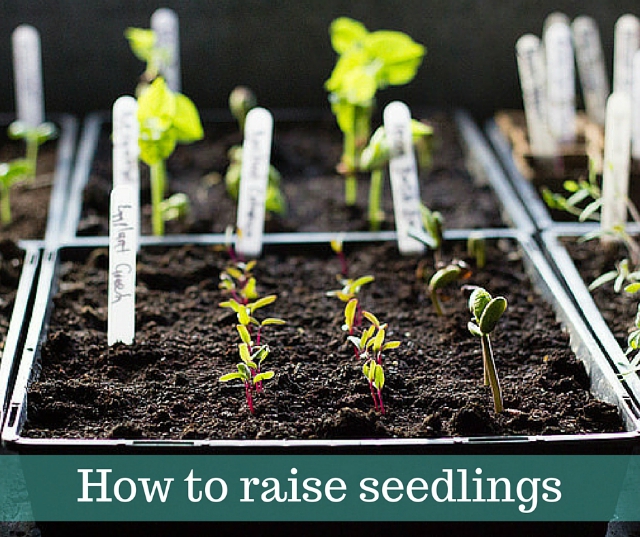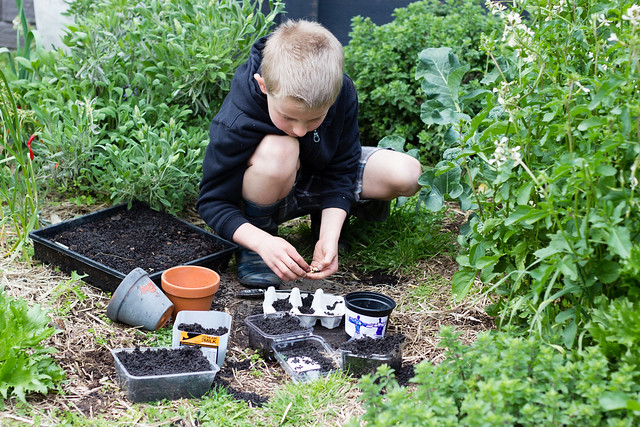This brilliant step by step how to post is from Kyrstie of a A Fresh Legacy. Kyrstie has a brilliant blog that will inspire you to want to create your own veggie and herb garden with her beautiful photos and recipes.
Growing food for the family has long been on my to do list and it will be one of my key projects once we return from school holidays. As I have very limited skill and find the whole gardening thing overwhelming I have actually purchased a Kitchen Garden Box from Kyrstie.
With her Kitchen Garden Box, Kyrstie has undertaken the planning and research for me and all I need to do is follow her instructions! The box includes:
- Organically certified seeds
- Tips and information to guide you in the process
- Copper plant labels
- Recipes to inspire you to use your harvests in family meals
- Bonus email support and additional seasonal content and downloads for one year
This is something I am really looking forward to doing with the younger kids!
***********
Growing vegetables and herbs from seed is perfectly suited to the Spring weather. The cold subsides as the sunshine increases and the days lengthen. Spring holidays provide a wonderful opportunity to commence an outdoor project such as starting your vegetable garden with the kids. A vegetable garden provides a dynamic learning environment that fosters patience, the powers of observation, appreciation of diversity, seasonality and for precious resources such as water. It also teaches responsible decision making.
Working and playing in the garden, establishing a garden brimming with produce that the family can harvest and eat together is a great achievement. It is a project that everyone can play a part in and contribute to the success and outcomes. It is a low cost activity that usually results in higher returns than costs. The harvests and meals that you create from your home grown food become a celebration of your combined achievement. Note: Seeds may be planted directly into the garden but they are easier to nurture and care for if started in a container or tray. This allows you to place them in a protected sunny position to avoid exposure to harsh weather such as frost.
Raising seedlings

To raise your seeds you will need:
Containers
A container with drainage holes and a depth of at least 5-6 cm
Take a look in your recycle bin, or around the house and I am sure you will find plenty of items you can use. I have listed some examples below
All of these items are suitable for raising seeds:
- Toilet roll holders
- Plastic berry or tomato tubs
- Ice cream or butter tubs
- Takeaway containers
- Egg cartons
- Milk cartons or containers
- Newspaper pots
- Previously used plant seedling pots
- Plant pots
Seeds
One of the key benefits of growing from seed is that you can choose to select non genetically modified, organic heirloom seeds of (almost) endless variety. You can choose to grow yellow carrots, purple eggplant, black tomatoes, and multi coloured beetroot if you would like to. These heirloom varieties are not easy to find if you are planting seedlings which are generally raised en masse and are often genetically modified to create disease resistant varieties or varieties with certain characteristics such as cold tolerance.
Knowledge of what to plant and when to plant it
This is not as tricky as it sounds. There is plenty of information readily available. It simply means that tropical fruit such as bananas will not grow in Victoria, no matter what the time of year, as it is just too cold. Choose to plant items that are suitable for the season and location you live.
Check the seed packet for this information and follow the guidelines for your region.
You may like to download my simple Seasonal Planting Guide to point you in the right direction if you are based in Victoria, SA or NSW
Gardenate is a great online resource that allows you to select your region and it will provide a list of what to plant by month.
Seed raising soil
This soil is a fine soil that allows the seedlings to develop their delicate roots easily. It is available from nurseries the garden section of Bunnings or similar stores.
A plant label or permanent marker
This can be an icy pole/craft stick. It simply needs to have the plant variety written on it so that you can recall what you have planted, especially if you plant a few different seeds in one area. Most of the recycled planting containers listed above could also be written on with a marker if you have nothing to use as a label. My children like to decorate the plant labels. It is good spelling and writing practice for young children.
Water
Water regularly rather than on an ad hoc basis and avoid letting the soil dry out. Place your newly planted seeds in a warm sunny location that is protected from the cold. If you have planted your seeds in a shallow container such as an egg carton or a halved toilet roll holder they will dry out very quickly and will require water at least every second day. If you have planted in a deeper container, water your newly planted seeds approximately every 3-4 days.
Reminder mechanism
Your seeds are unlikely to germinate if you plant and water them and then forget about them! They require access to sunshine and a regular supply of water to keep the soil moist. You could write a diary note or make a mark on the calendar to remind the kids to water their seeds
How to plant a seed:

Plant a few extra seeds to be sure that a suitable number of them germinate. Many good seed brands germination test their seeds. If you know that your seed supplier has done this (it will be written on the packet) you will only need to plant as many seeds as you wish to grow. Many cheaper brands do not germination test but you can get around this by planting a few more seeds than you need so that enough grow. This will also allow you to select the strongest seedlings to transplant into the garden when the time comes. Plant the seeds as per the label instructions.
If you are new to growing vegetables I suggest that you begin by planting vegetables or herbs that are robust and fast growing. Allow your children to see and experience a sense of achievement and satisfaction from some quick results. This will assist to stimulate an interest in trying to grow more after their initial success.
Plants such as beans are perfect to plant in the garden now. The seeds are large and easy to handle for young children. Bean seedlings are also large and reasonably robust when they sprout.
- Fill the container you have selected with seed raising soil, ensure it has drainage holes in the base
- Make a shallow line in the soil and add the seeds with space between each one. Do not push the seeds down deep into the soil. They should be placed just below the surface
- Cover the seed with a fine layer of soil
- Add a plant label at the start of the row
- Water in a gently shower from above so as not to dislodge the newly planted seeds with a heavy downpour
- Wait and watch your seedling grow
- When your seedling has 3-4 developed leaves it is ready to transplant to the vegetable garden or pot that you are going to grow it in
If you would like to watch these steps I have created this quick little video that may help.
*Safety notes when gardening with children:
- Soil contains bacteria that should not be inhaled. Do not use seed raising soil on a windy day. Never pour soil from a height. Wear a mask if you are concerned or suffer respiratory issues.
- Wear gloves when gardening and wash hands when you are finished.
Enjoy the Spring sunshine. I look forward to hearing what you plant and then harvest from your garden.
About Kyrstie
 Kyrstie Barcak is the creator of A Fresh Legacy, a food and garden site. She inspires and helps families to create their own vegetable garden and enjoy fresh healthy meals. Kyrstie has developed recipes for some of Australia’s leading food brands and has just released the Kitchen Garden Box, a product designed for busy families to achieve a complete fresh food experience from planting and growing to harvesting and cooking. Kyrstie is currently working on her first book, Grow Just One Thing. It is due for release in April 2016. You can read more at:
Kyrstie Barcak is the creator of A Fresh Legacy, a food and garden site. She inspires and helps families to create their own vegetable garden and enjoy fresh healthy meals. Kyrstie has developed recipes for some of Australia’s leading food brands and has just released the Kitchen Garden Box, a product designed for busy families to achieve a complete fresh food experience from planting and growing to harvesting and cooking. Kyrstie is currently working on her first book, Grow Just One Thing. It is due for release in April 2016. You can read more at:
Or join in the conversation:



